Abstract
1. It has been confirmed that antidromic stimulation of motoneurones in the cat lumbar cord can induce, when properly conditioned, a centrifugal discharge in dorsal root afferent fibres.
2. The effective conditioning can be (a) an orthodromic volley to the same or an adjacent dorsal root, (b) a volley to the dorsal column one or two segments above the tested level, or (c) a natural stimulus applied to the ipsi- or contralateral hind limb.
3. The conditioning stimulus acts by increasing presynaptic excitability; the peak of its effect (maximum presynaptic depolarization) occurs 7-10 msec after the arrival of the conditioning volley to the cord and then quickly decays.
4. A large antidromic field potential in the ventral horn is not necessary for the production of a centrifugal dorsal root discharge. Activation of a ventral root filament of approximately 100 μ in diameter can still induce such a discharge in a single dorsal root fibre. Furthermore, antidromic stimulation of the remaining fibres of the same ventral root cannot affect the terminals activated by the thin ventral root filament.
5. The phenomenon of motoneurone—presynaptic interaction was obtained in different types of experimental preparations: acute and chronic spinal, anaemic and midcollicular decerebrate, animals with intact supraspinal centres, and one animal without acute laminectomy.
Full text
PDF

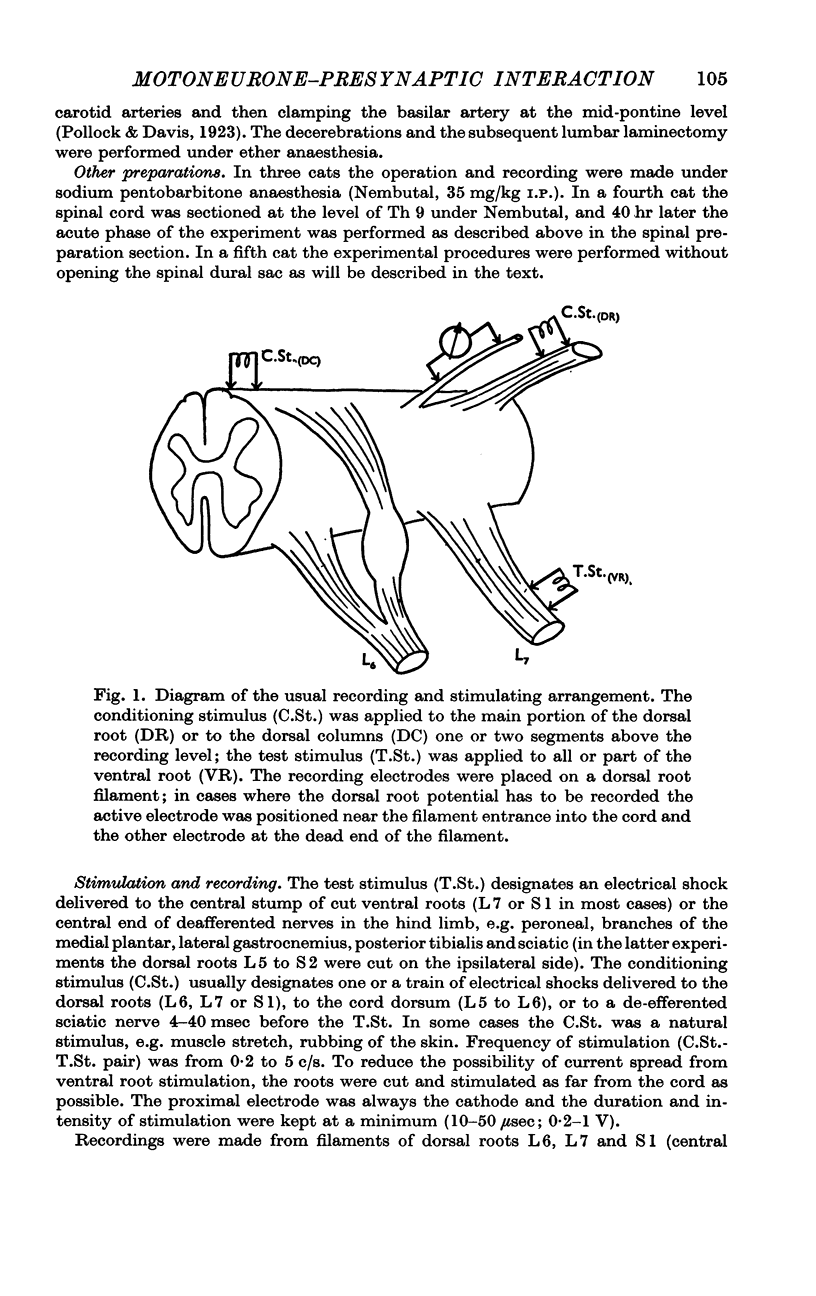
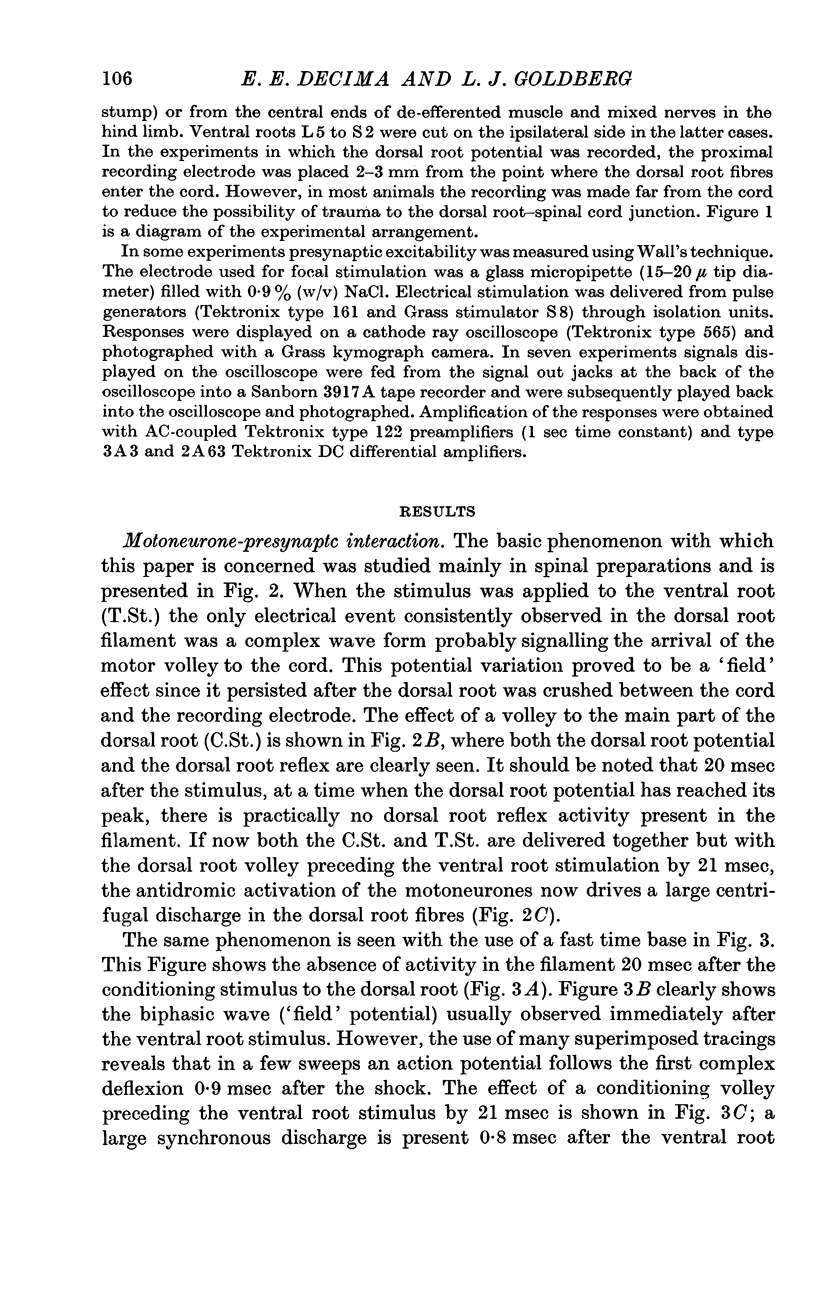
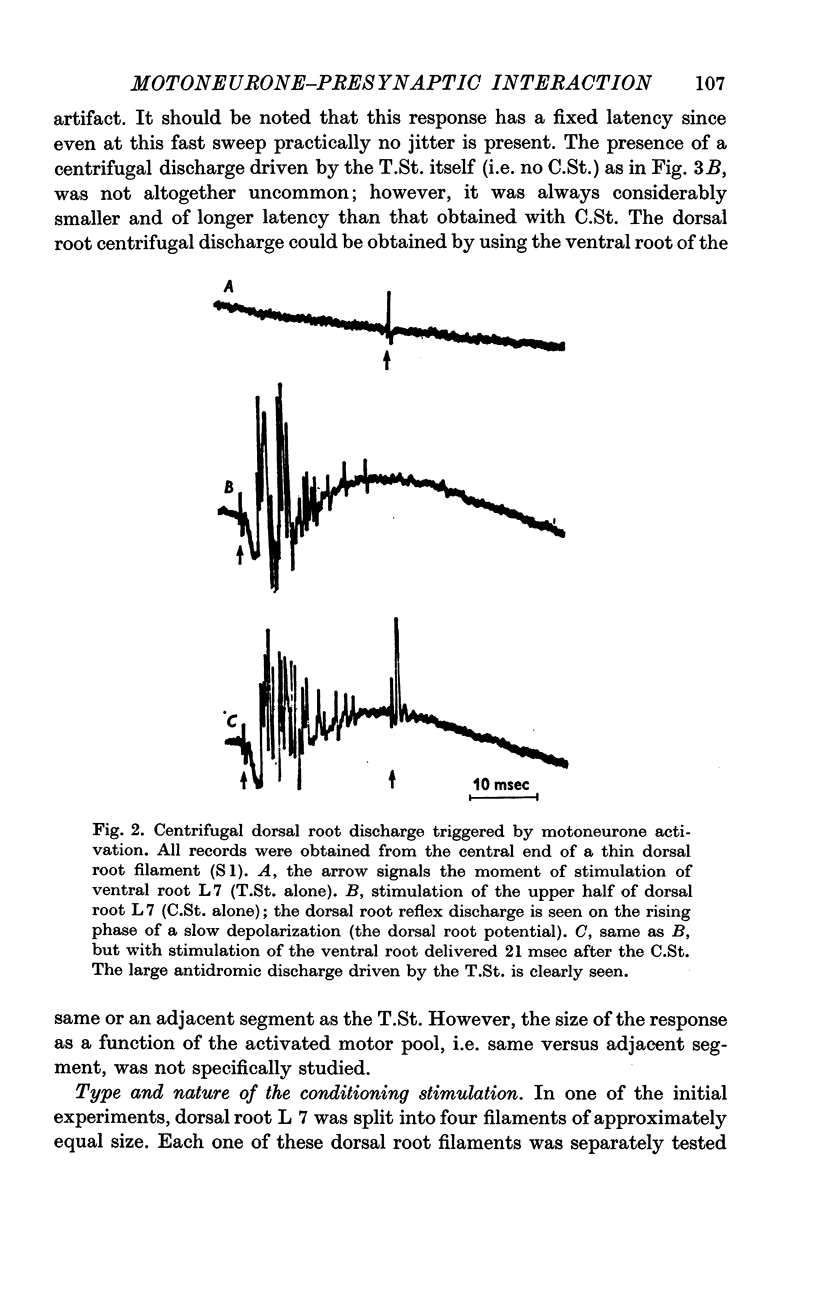

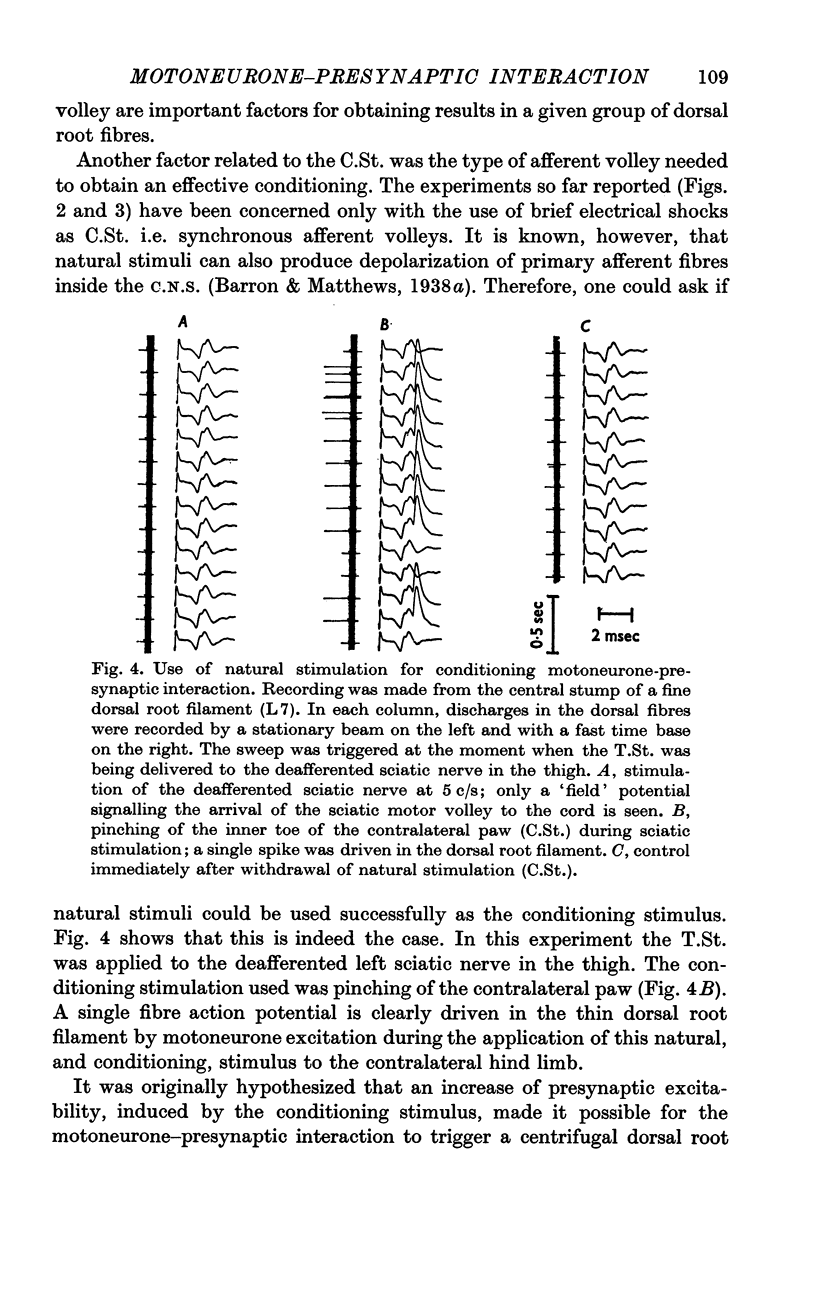
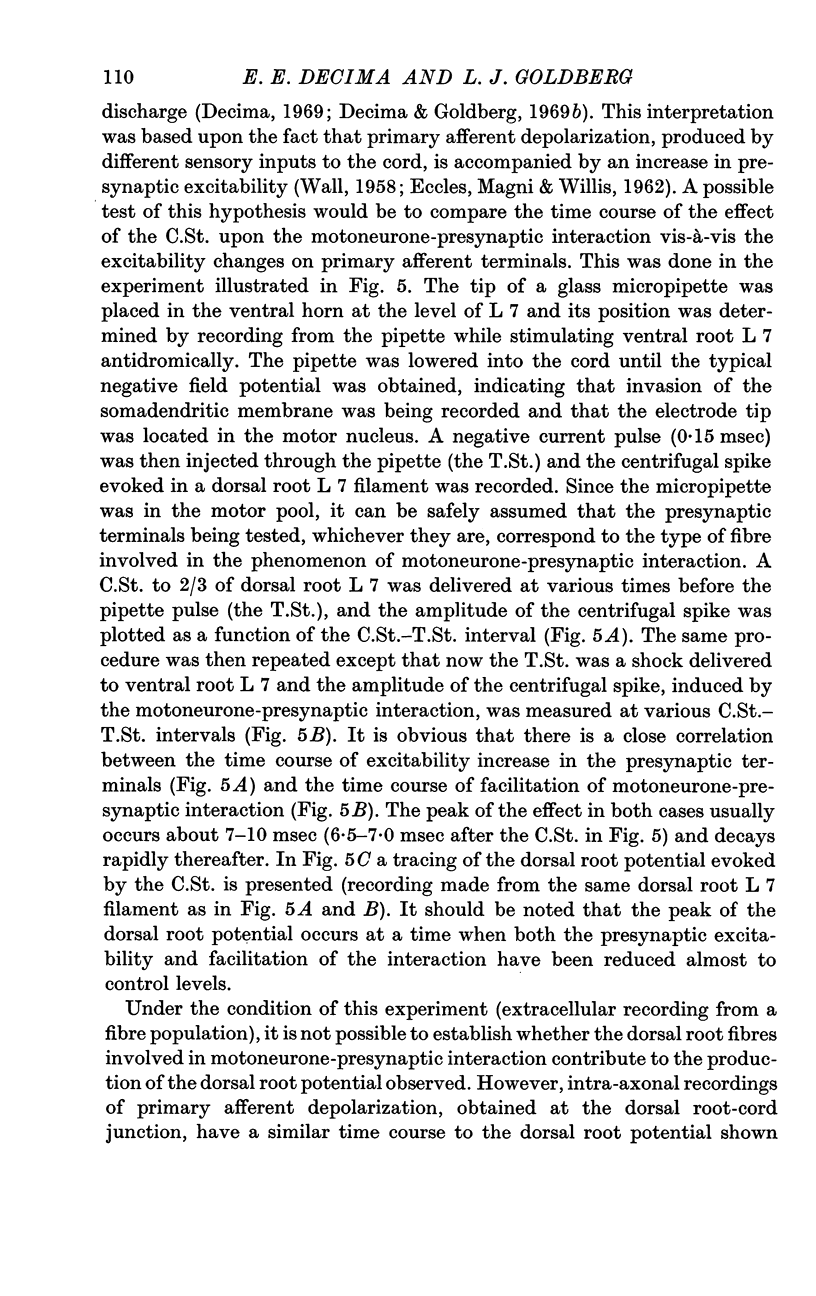
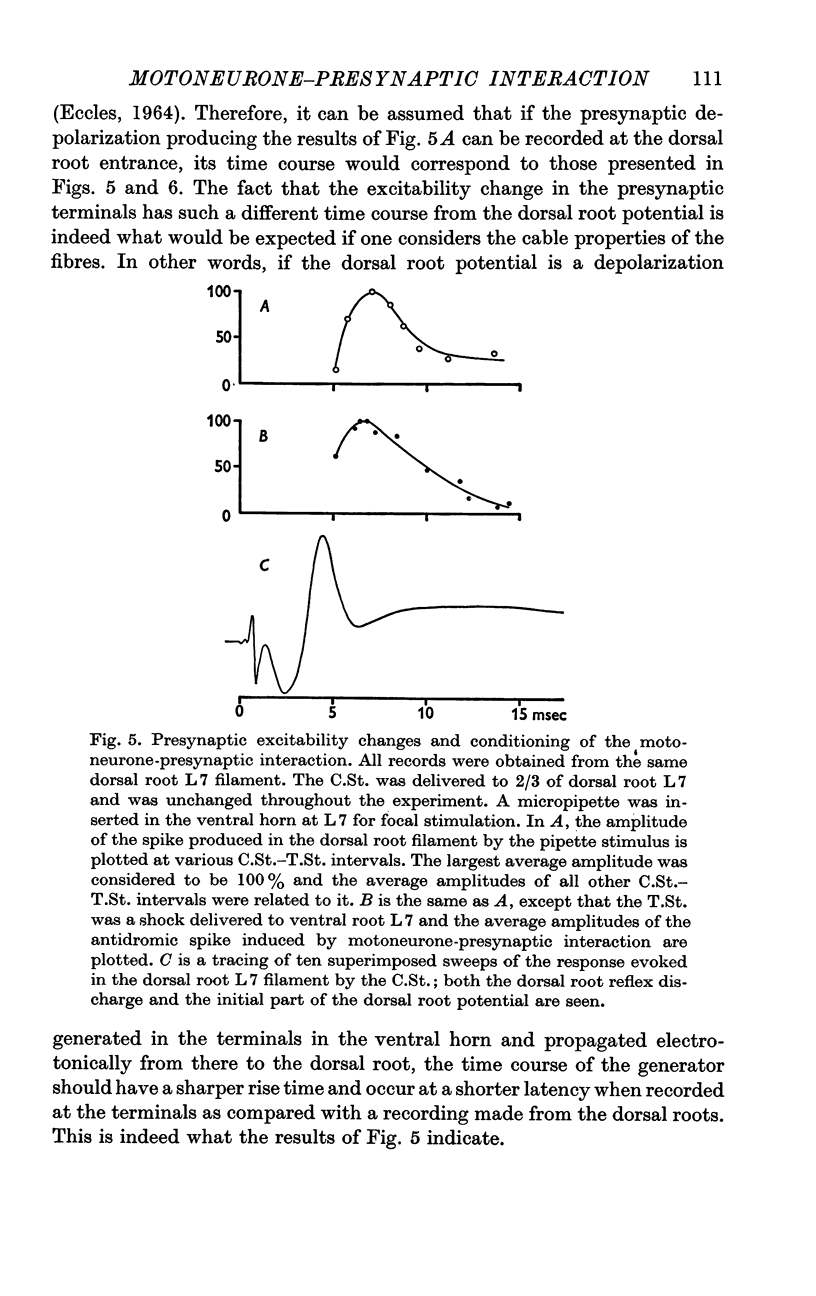
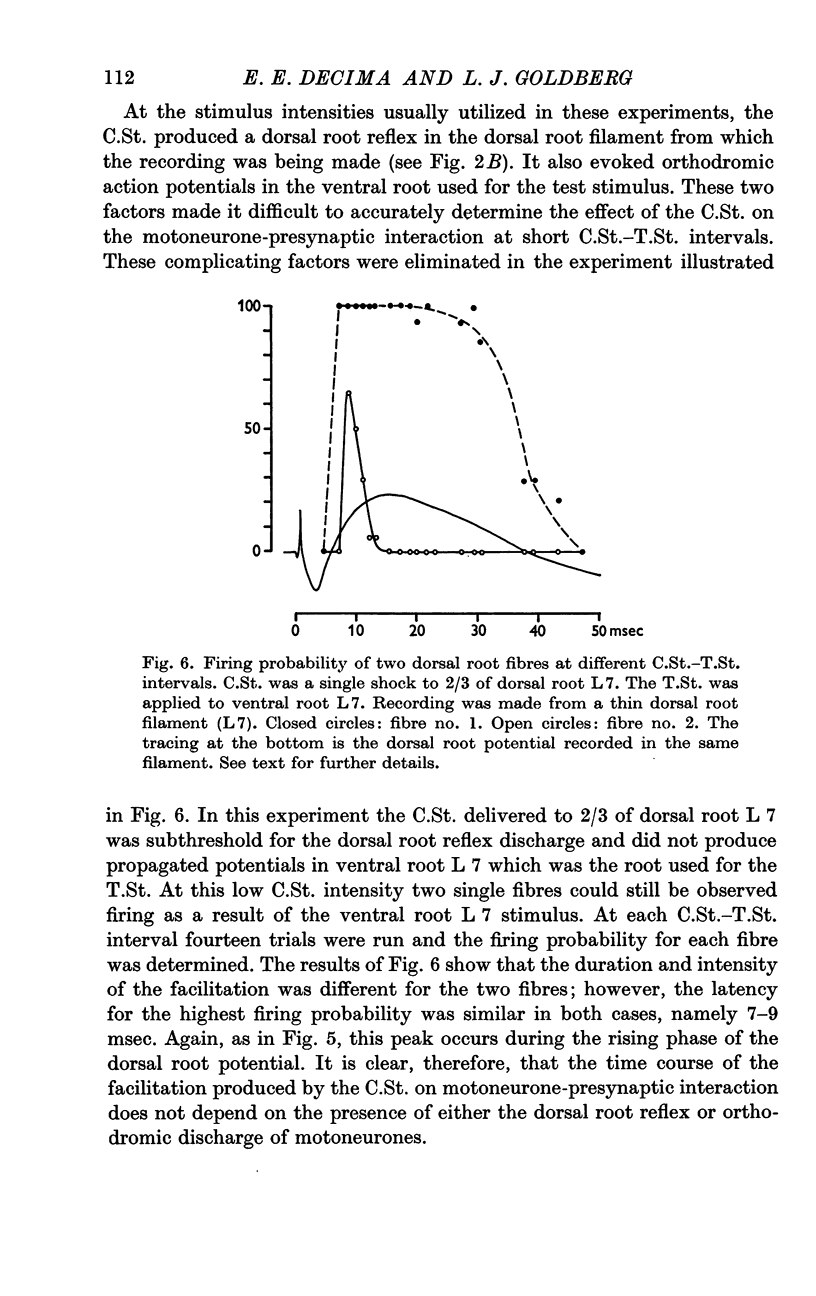
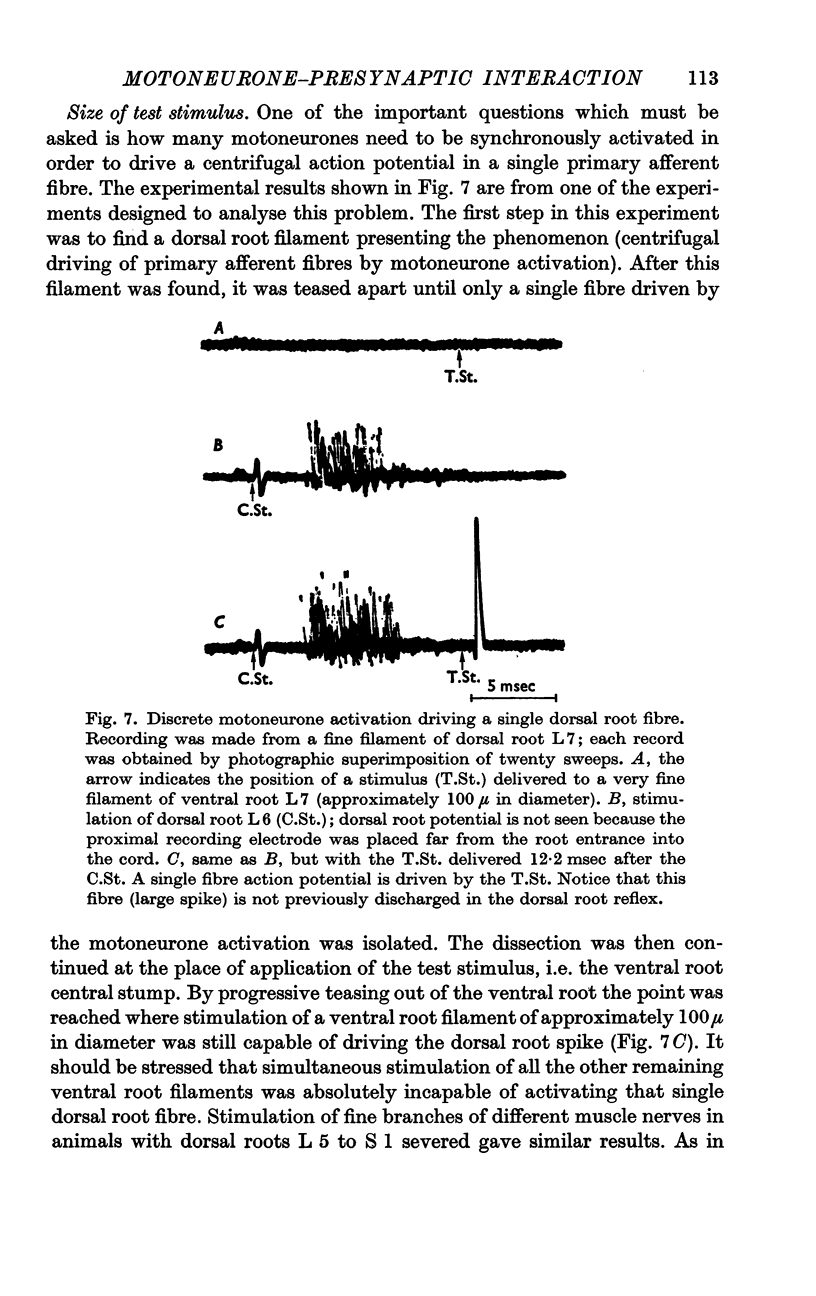
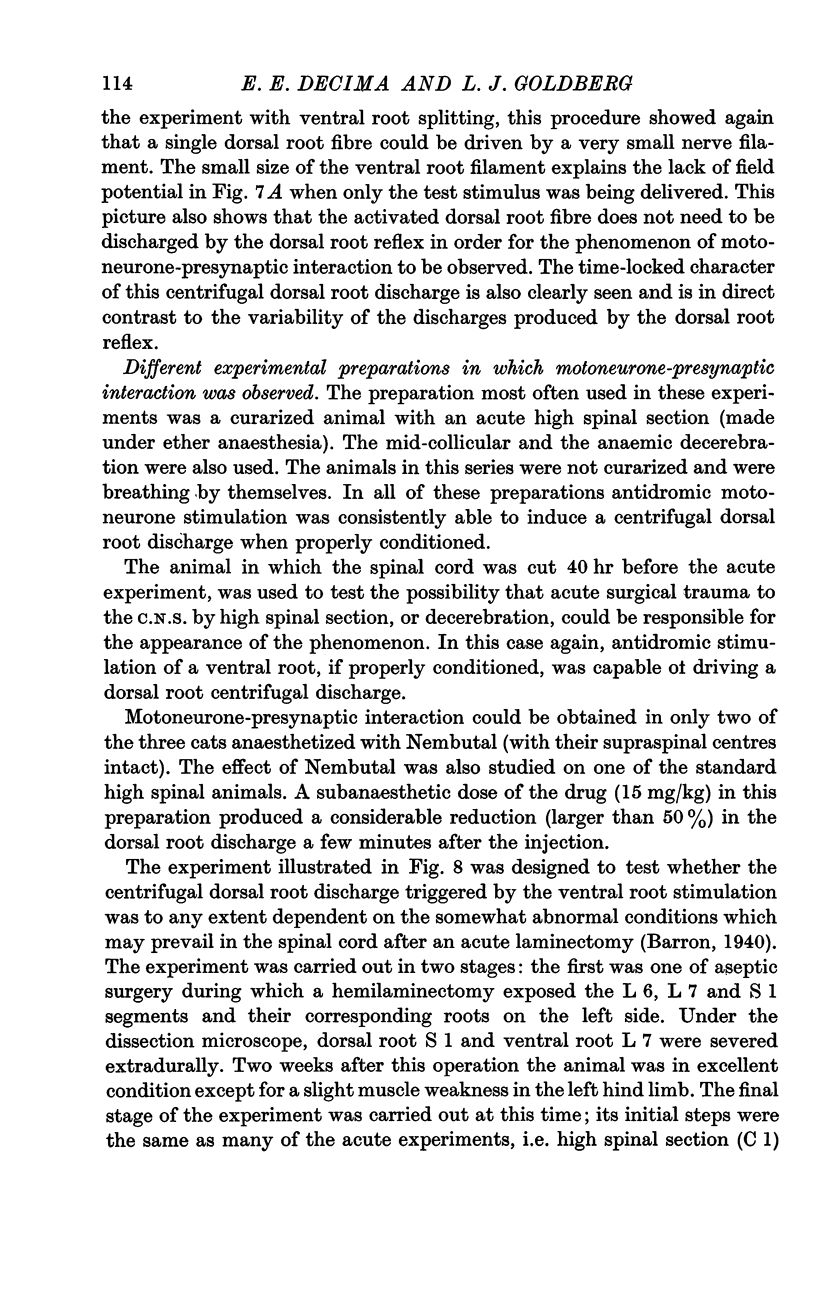


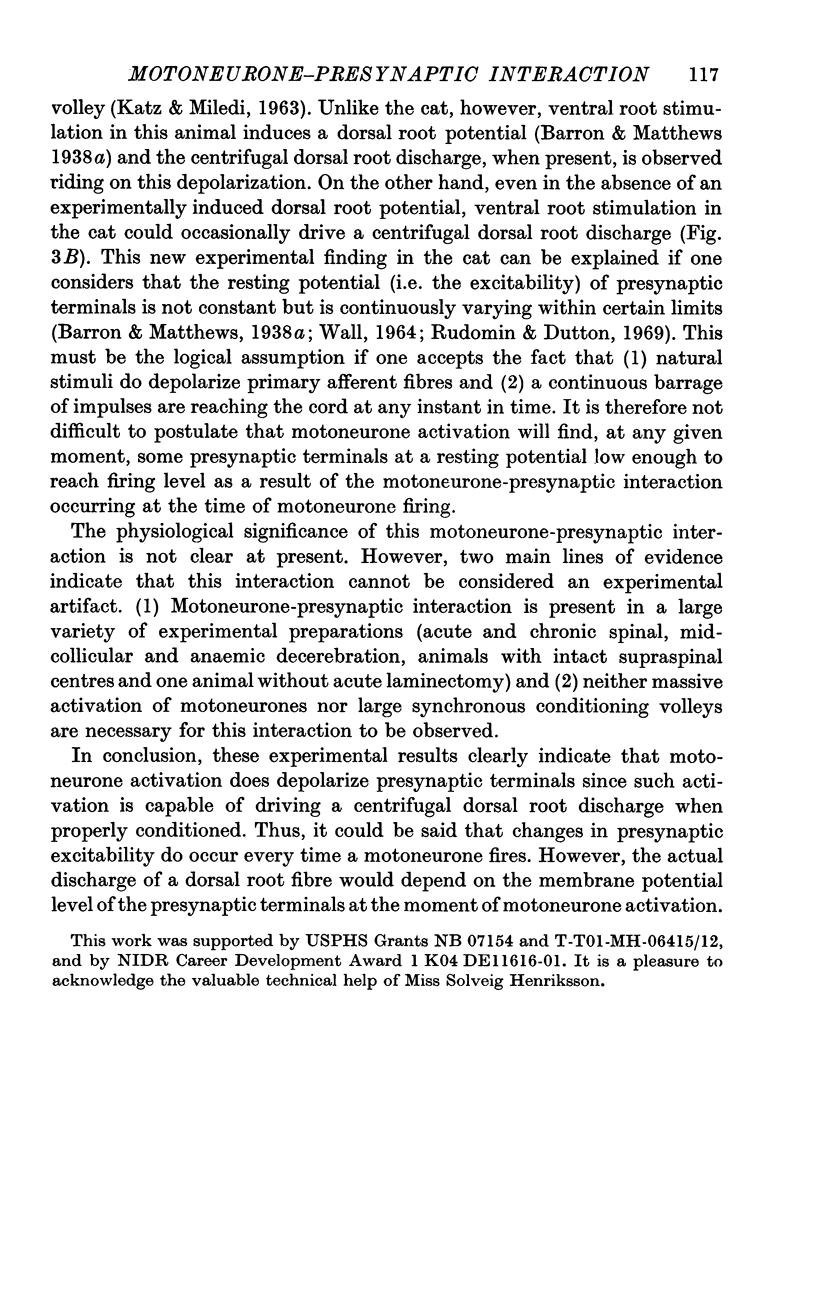
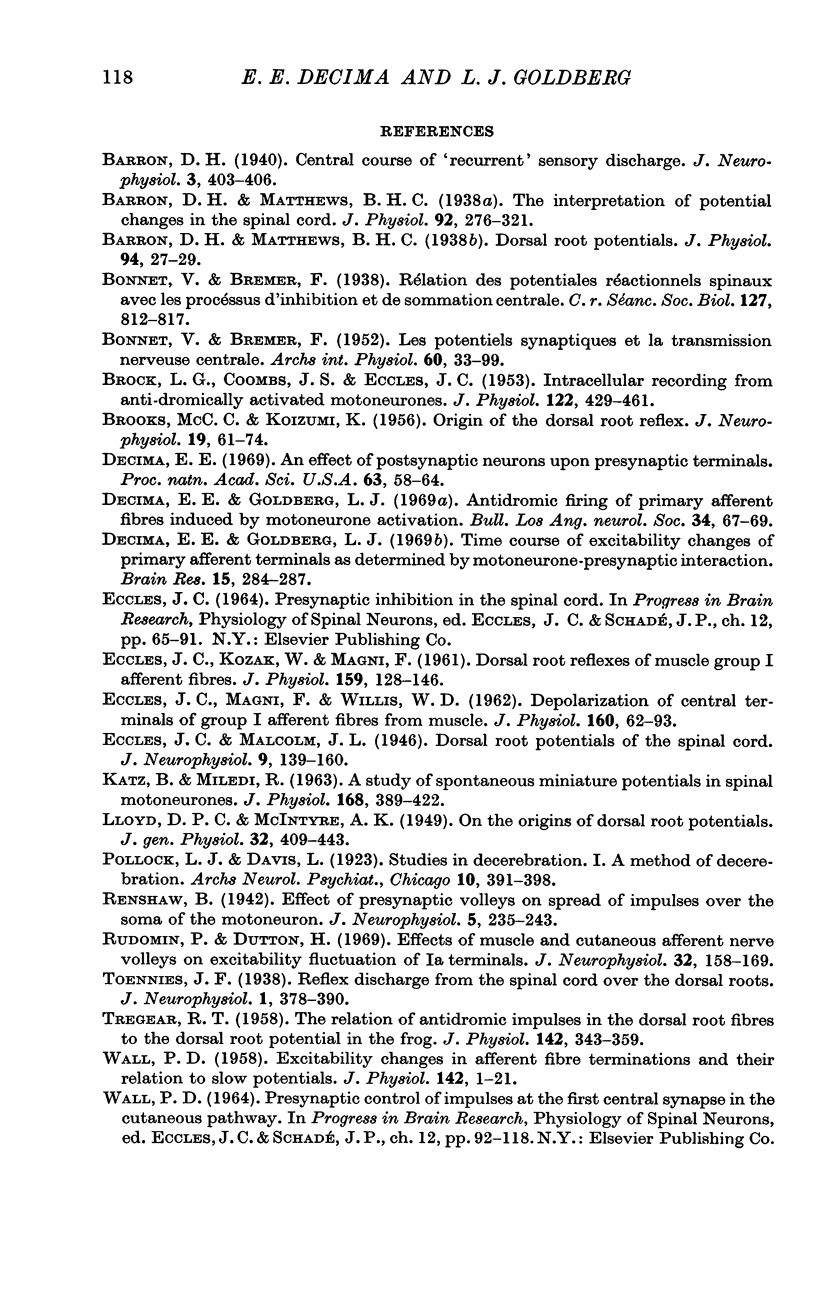
Selected References
These references are in PubMed. This may not be the complete list of references from this article.
- BONNET V., BREMER F. Les potentiels synaptiques et la transmission nerveuse centrale. Arch Int Physiol. 1952 Feb;60(1):33–93. doi: 10.3109/13813455209145032. [DOI] [PubMed] [Google Scholar]
- BROCK L. G., COOMBS J. S., ECCLES J. C. Intracellular recording from antidromically activated motoneurones. J Physiol. 1953 Dec 29;122(3):429–461. doi: 10.1113/jphysiol.1953.sp005013. [DOI] [PMC free article] [PubMed] [Google Scholar]
- Barron D. H., Matthews B. H. The interpretation of potential changes in the spinal cord. J Physiol. 1938 Apr 14;92(3):276–321. doi: 10.1113/jphysiol.1938.sp003603. [DOI] [PMC free article] [PubMed] [Google Scholar]
- Decima E. E. An effect of postsynaptic neurons upon presynaptic terminals. Proc Natl Acad Sci U S A. 1969 May;63(1):58–64. doi: 10.1073/pnas.63.1.58. [DOI] [PMC free article] [PubMed] [Google Scholar]
- Decima E. E., Goldberg L. J. Antidromic firing of primary afferent fibers induced by motoneuron activation. Bull Los Angeles Neurol Soc. 1969 Jan;34(1):67–69. [PubMed] [Google Scholar]
- ECCLES J. C., KOZAK W., MAGNI F. Dorsal root reflexes of muscle group I afferent fibres. J Physiol. 1961 Nov;159:128–146. doi: 10.1113/jphysiol.1961.sp006797. [DOI] [PMC free article] [PubMed] [Google Scholar]
- Eccles J. C., Magni F., Willis W. D. Depolarization of central terminals of Group I afferent fibres from muscle. J Physiol. 1962 Jan;160(1):62–93. doi: 10.1113/jphysiol.1962.sp006835. [DOI] [PMC free article] [PubMed] [Google Scholar]
- KATZ B., MILEDI R. A STUDY OF SPONTANEOUS MINIATURE POTENTIALS IN SPINAL MOTONEURONES. J Physiol. 1963 Sep;168:389–422. doi: 10.1113/jphysiol.1963.sp007199. [DOI] [PMC free article] [PubMed] [Google Scholar]
- Reinhart R. J., Zuber B. L. Cellular activation patterns in the abducens nucleus during horizontal nystagmus in the cat. Brain Res. 1969 Sep;15(1):284–287. doi: 10.1016/0006-8993(69)90333-3. [DOI] [PubMed] [Google Scholar]
- Rudomin P., Dutton H. Effect of muscle and cutaneous afferent nerve volleys on excitability fluctuations of Ia terminals. J Neurophysiol. 1969 Mar;32(2):158–169. doi: 10.1152/jn.1969.32.2.158. [DOI] [PubMed] [Google Scholar]
- TREGEAR R. T. The relation of antidromic impulses in the dorsal root fibres to the dorsal root potential in the frog. J Physiol. 1958 Jul 14;142(2):343–359. doi: 10.1113/jphysiol.1958.sp006021. [DOI] [PMC free article] [PubMed] [Google Scholar]
- WALL P. D. Excitability changes in afferent fibre terminations and their relation to slow potentials. J Physiol. 1958 Jun 18;142(1):1–21. doi: 10.1113/jphysiol.1958.sp005997. [DOI] [PMC free article] [PubMed] [Google Scholar]
- WALL P. D. PRESYNAPTIC CONTROL OF IMPULSES AT THE FIRST CENTRAL SYNAPSE IN THE CUTANEOUS PATHWAY. Prog Brain Res. 1964;12:92–118. doi: 10.1016/s0079-6123(08)60619-6. [DOI] [PubMed] [Google Scholar]


